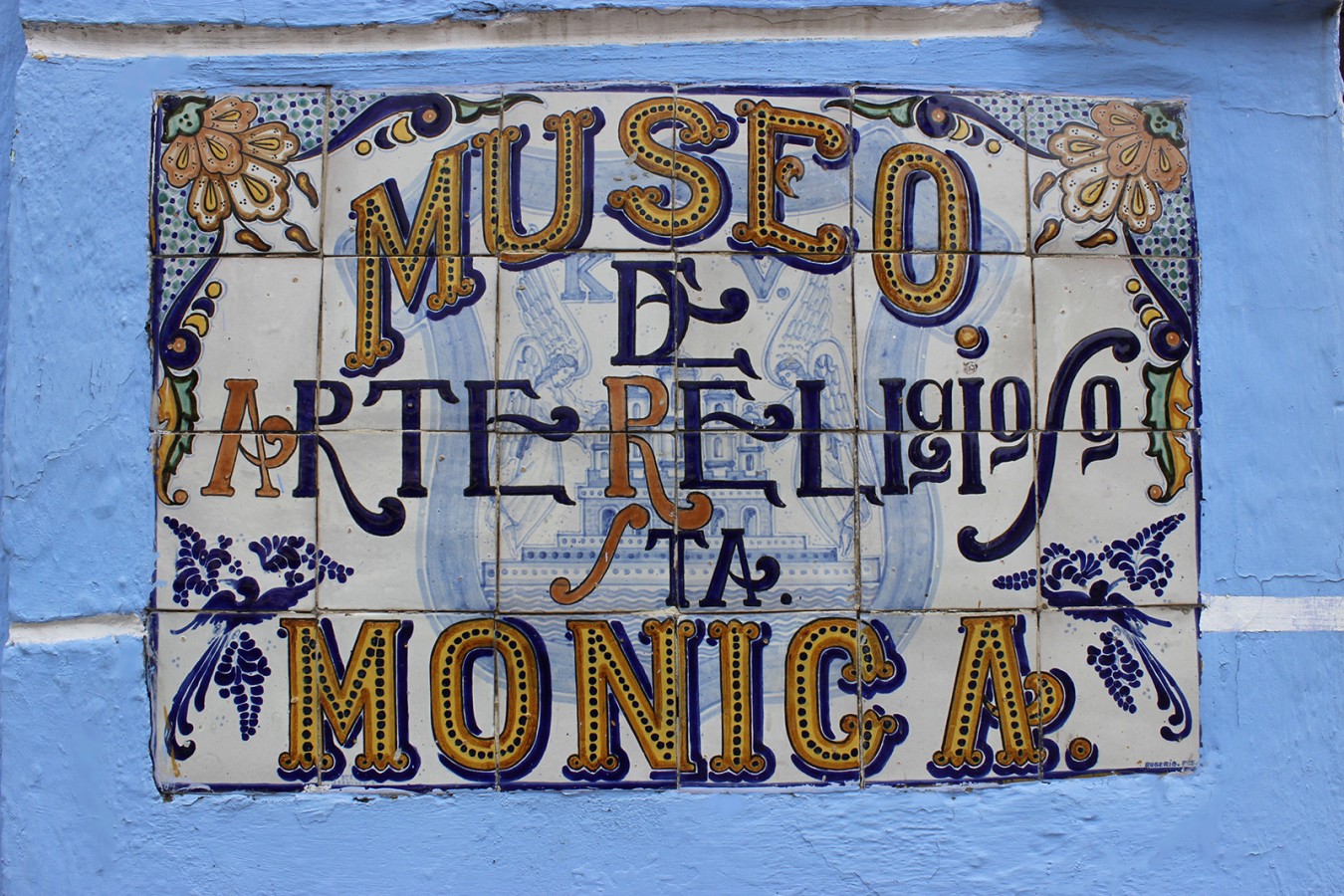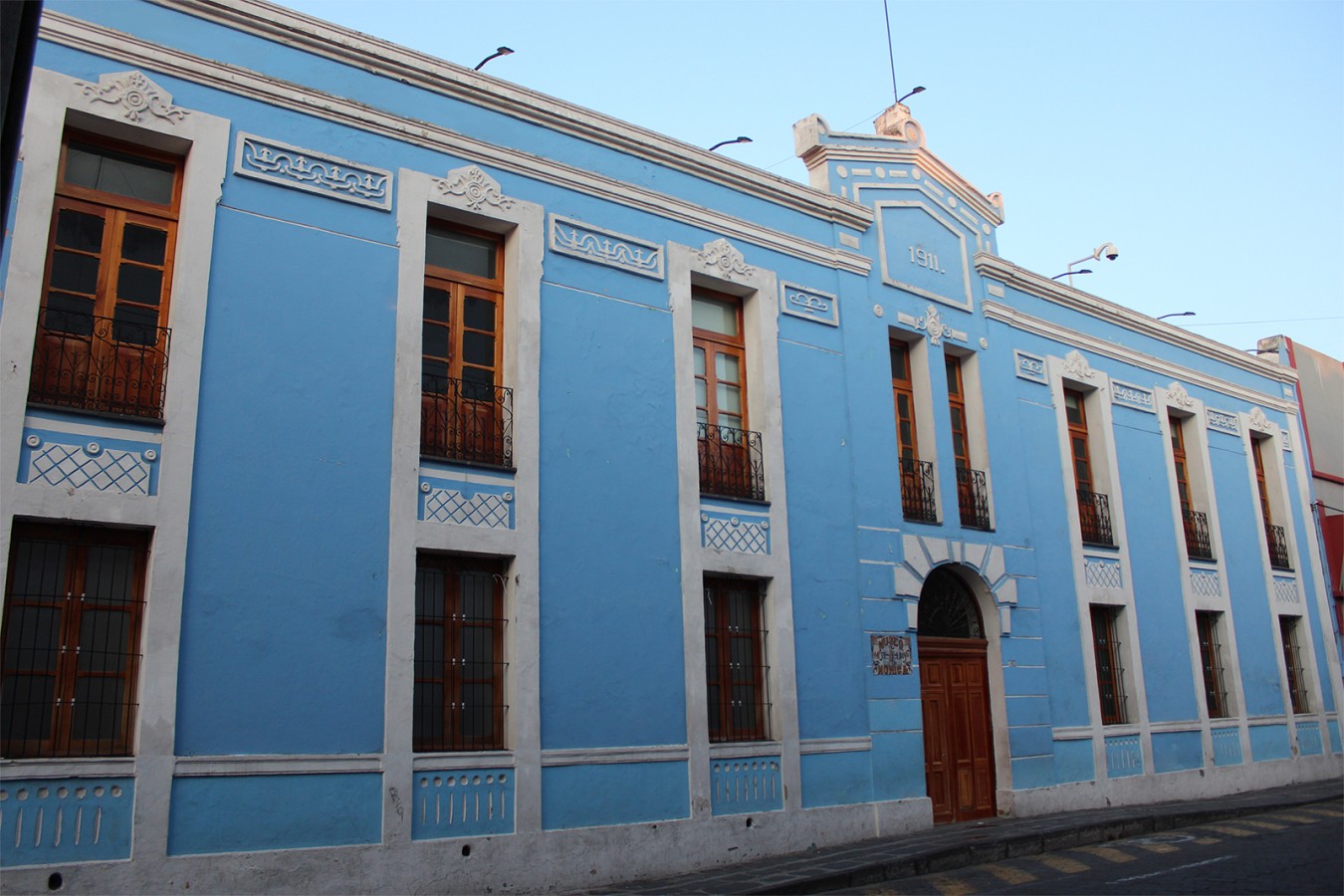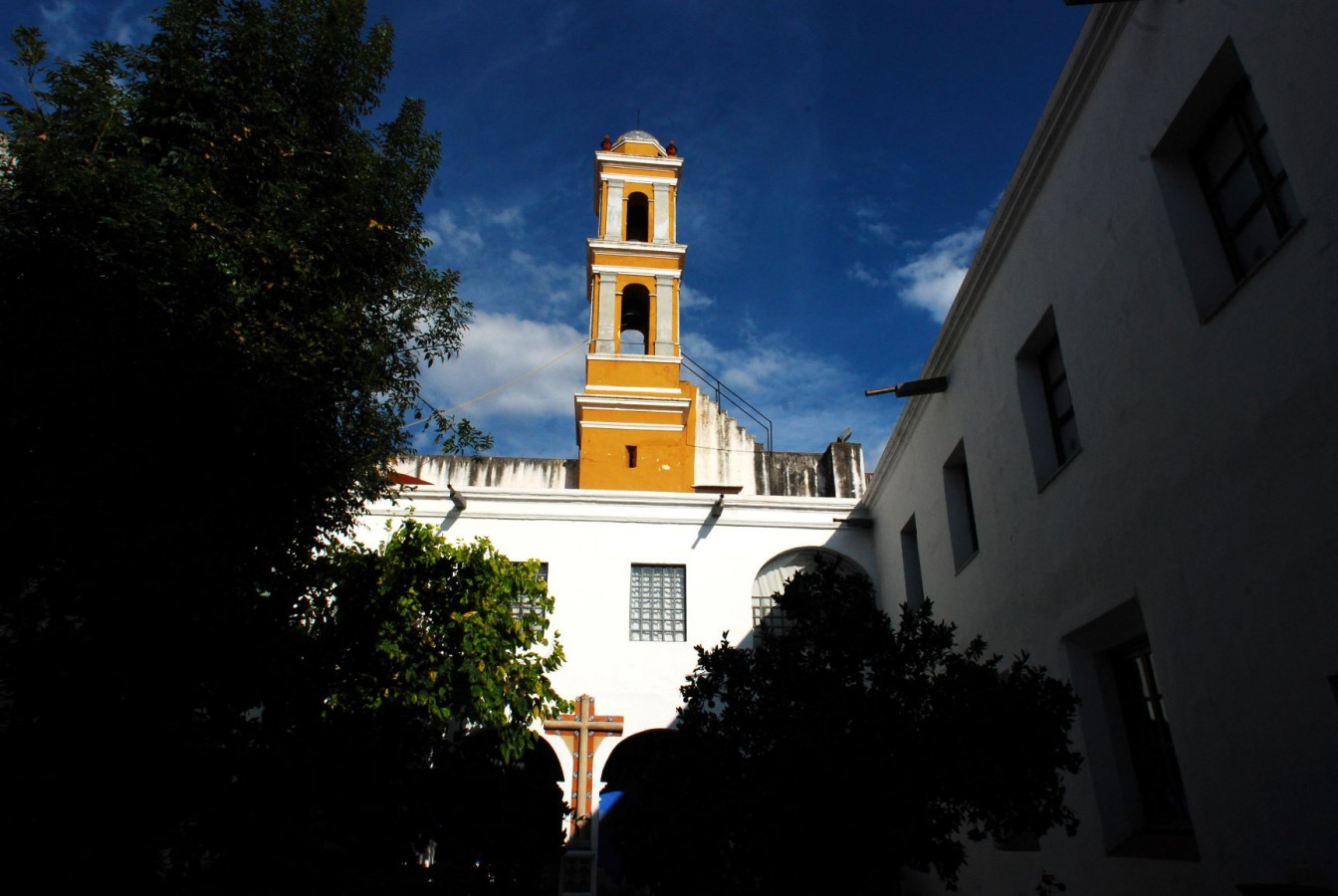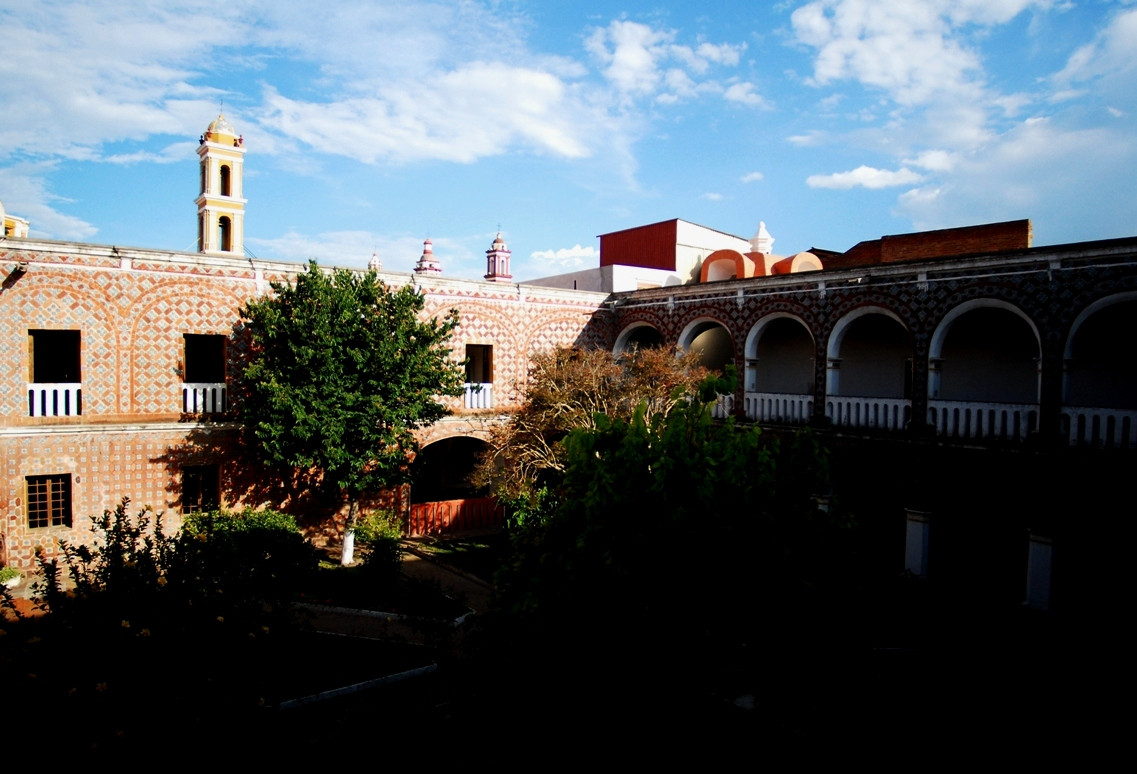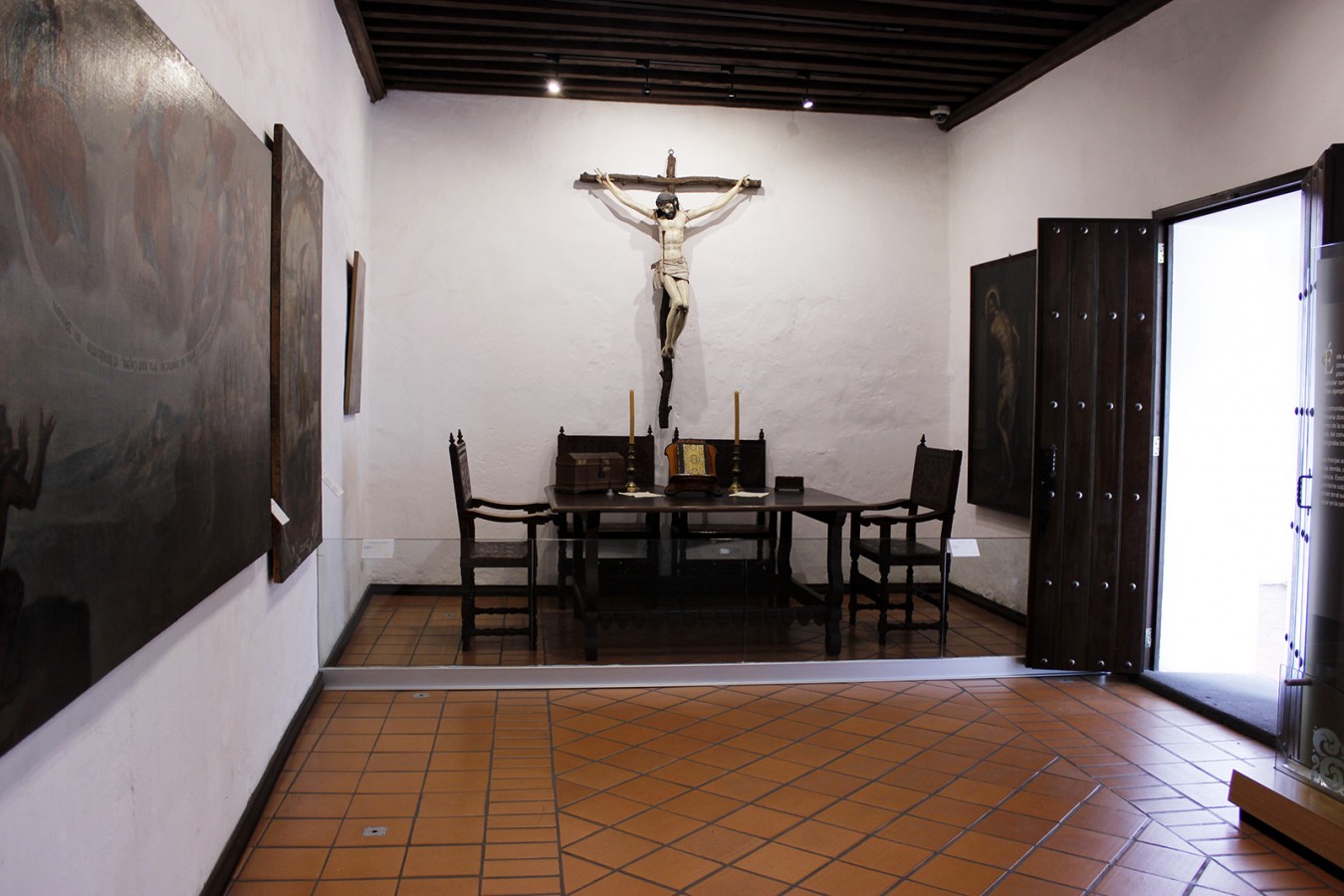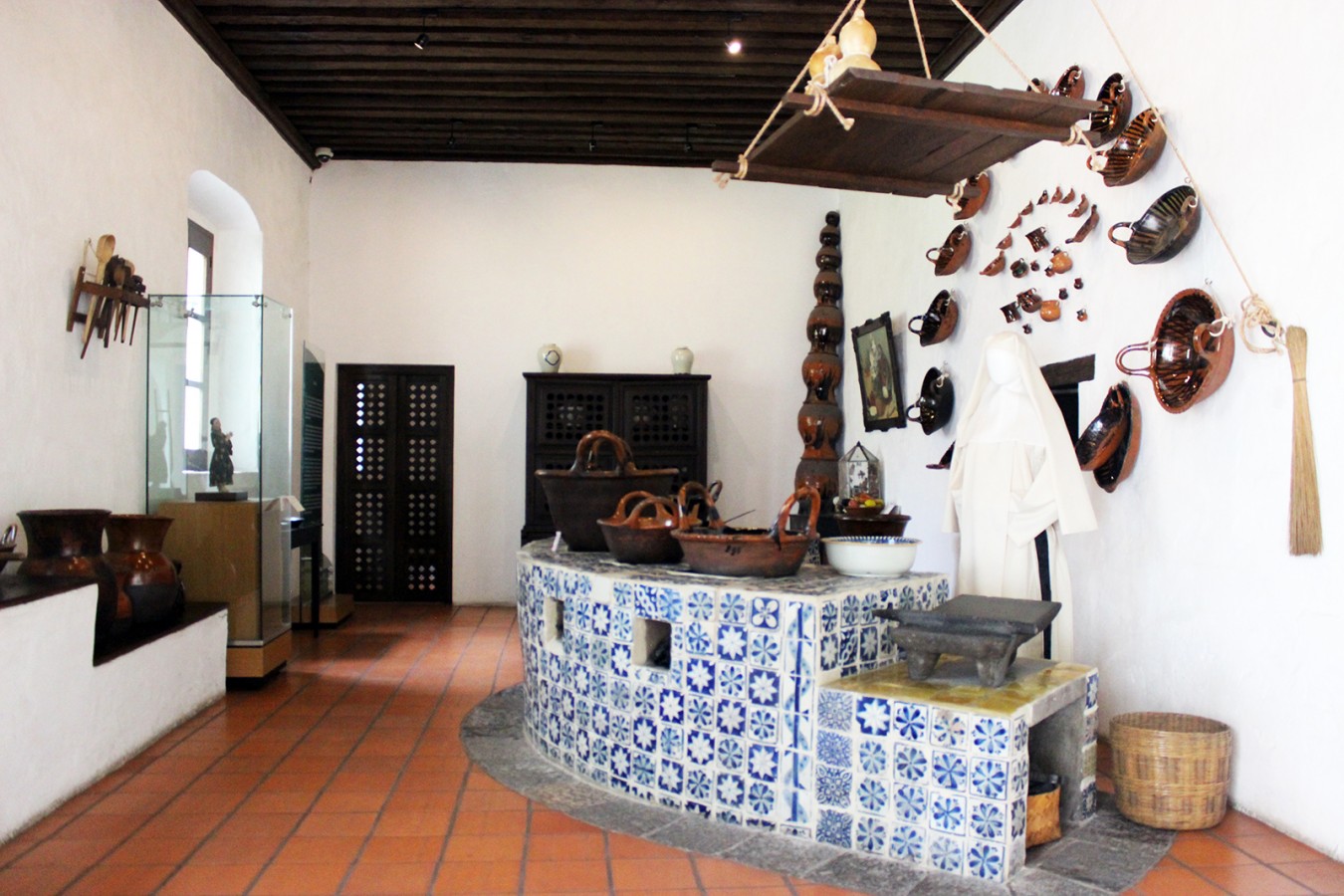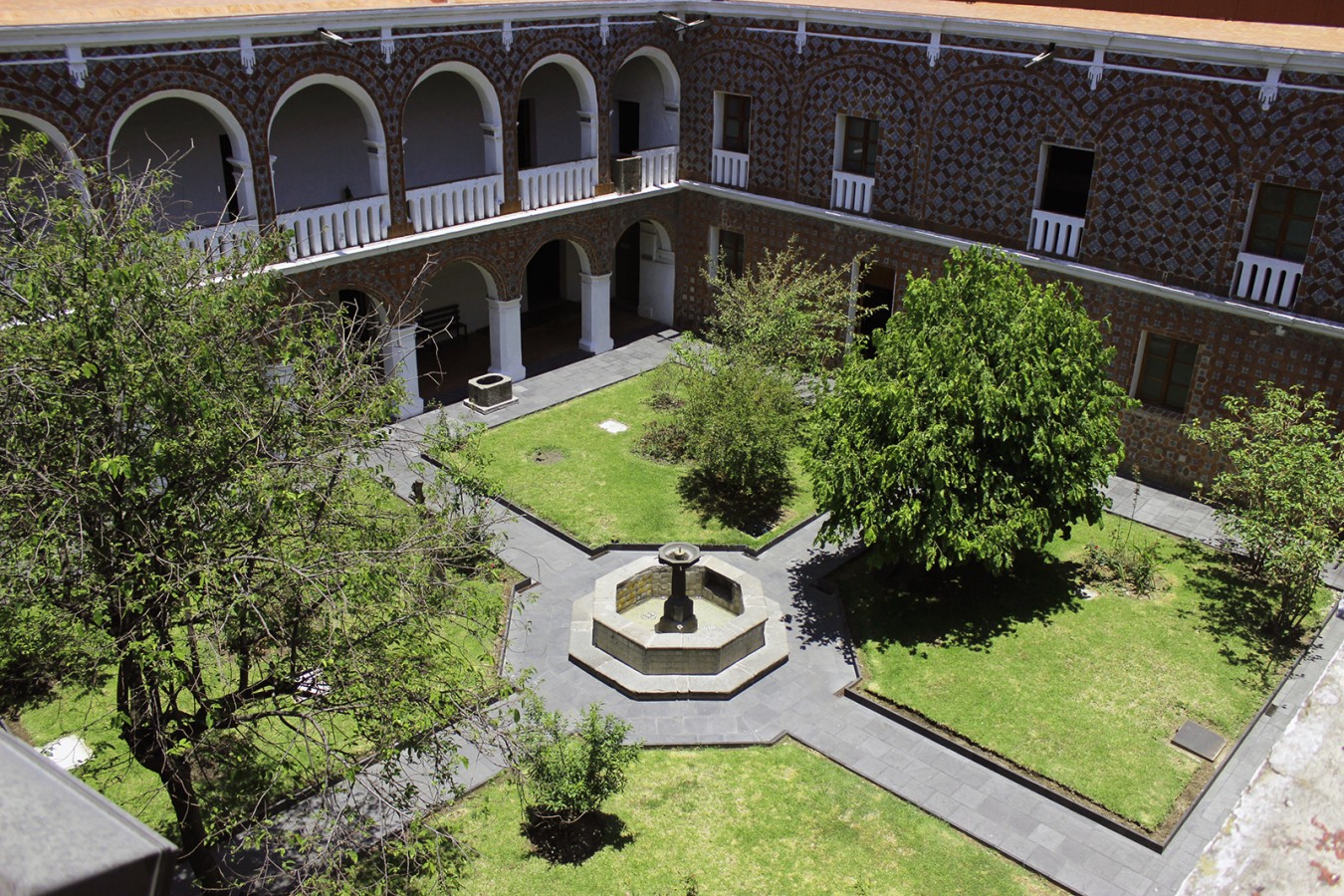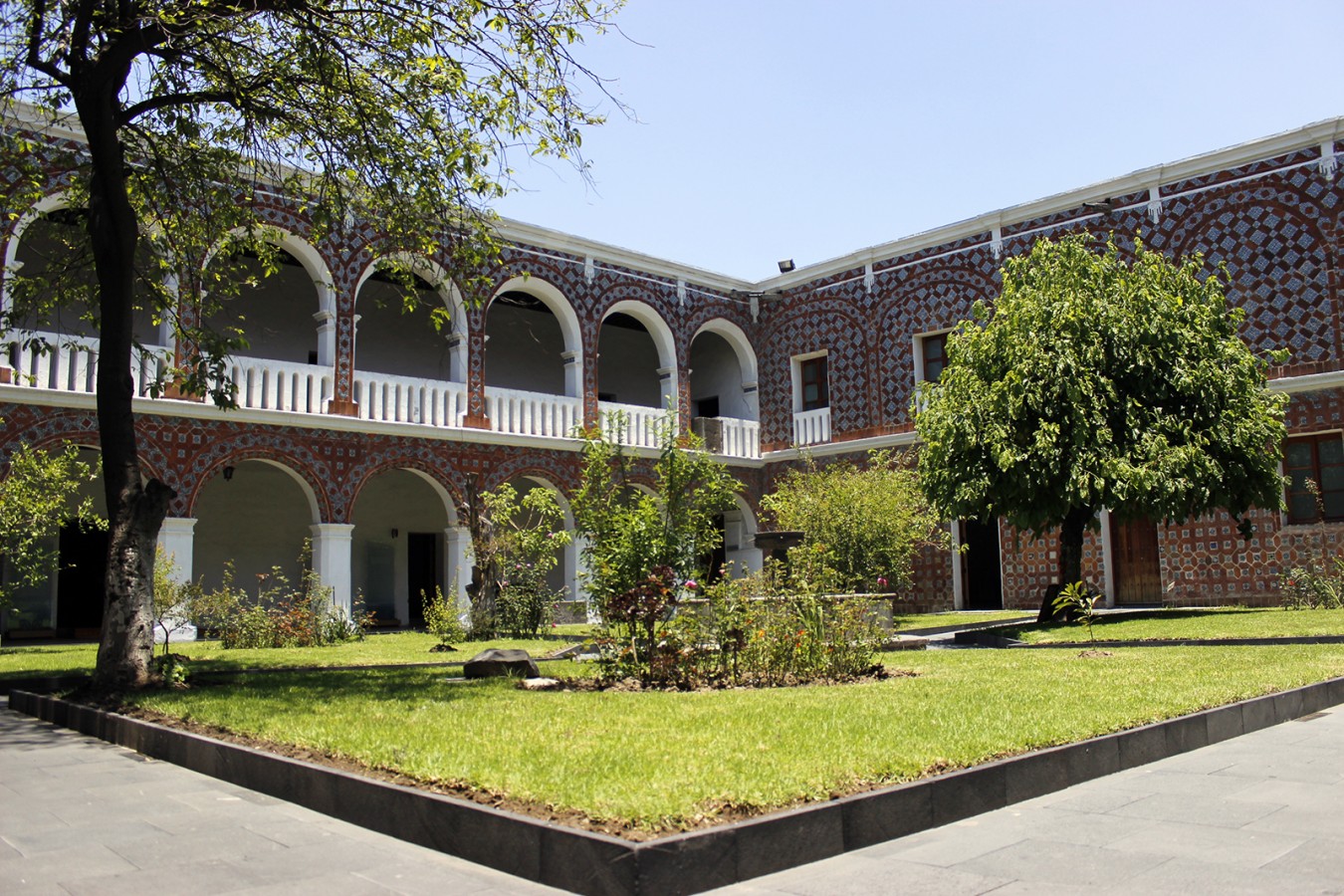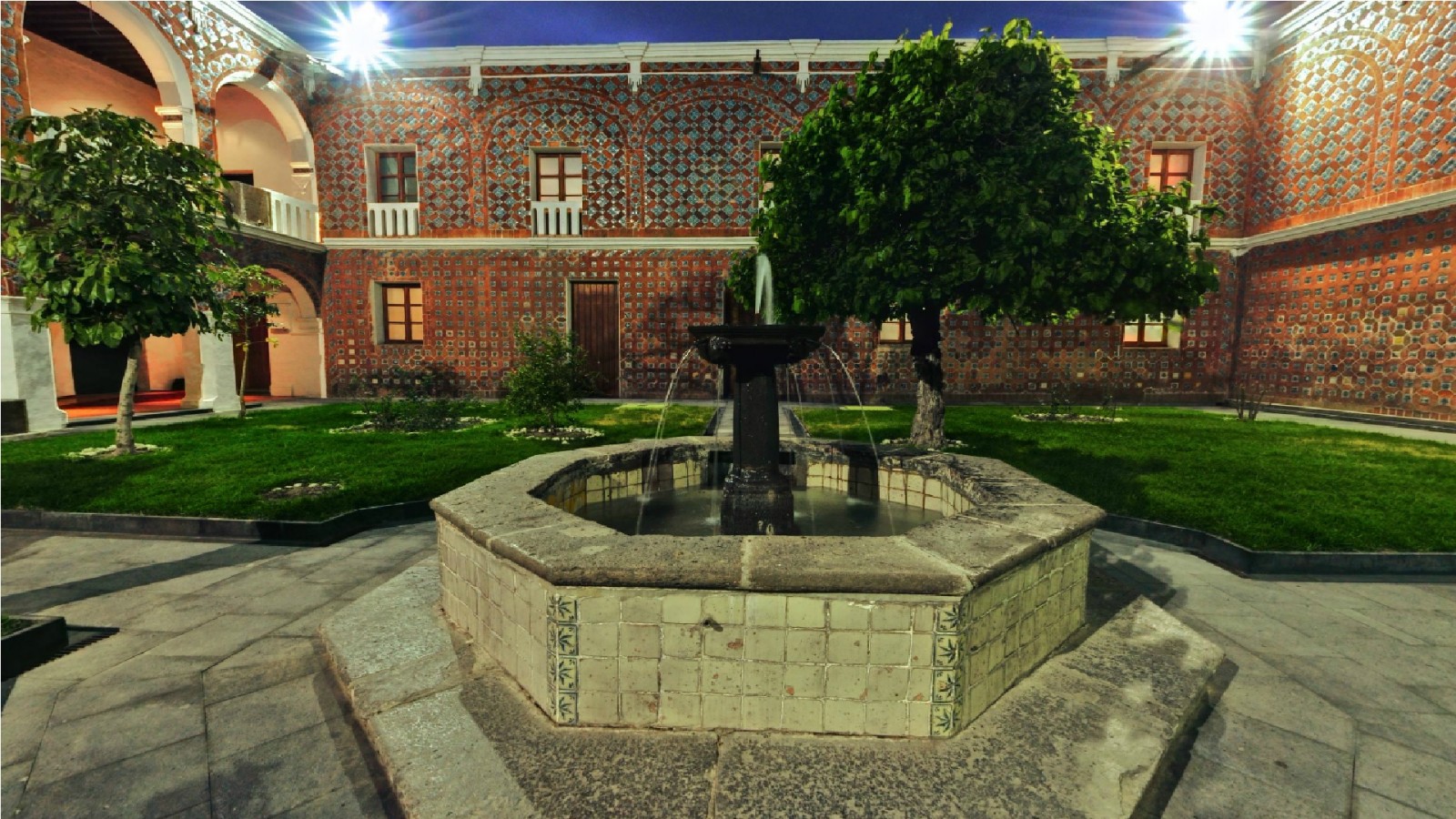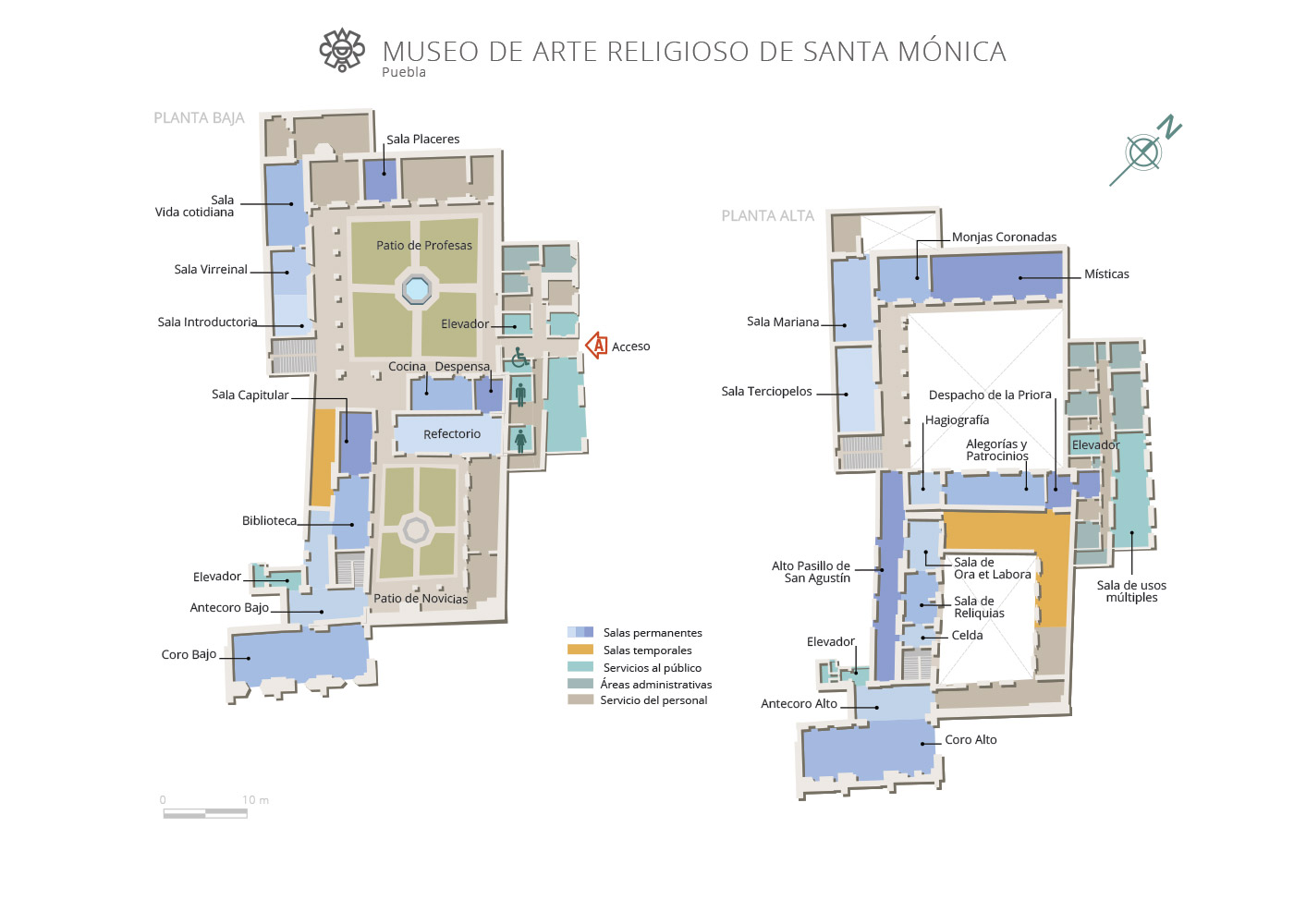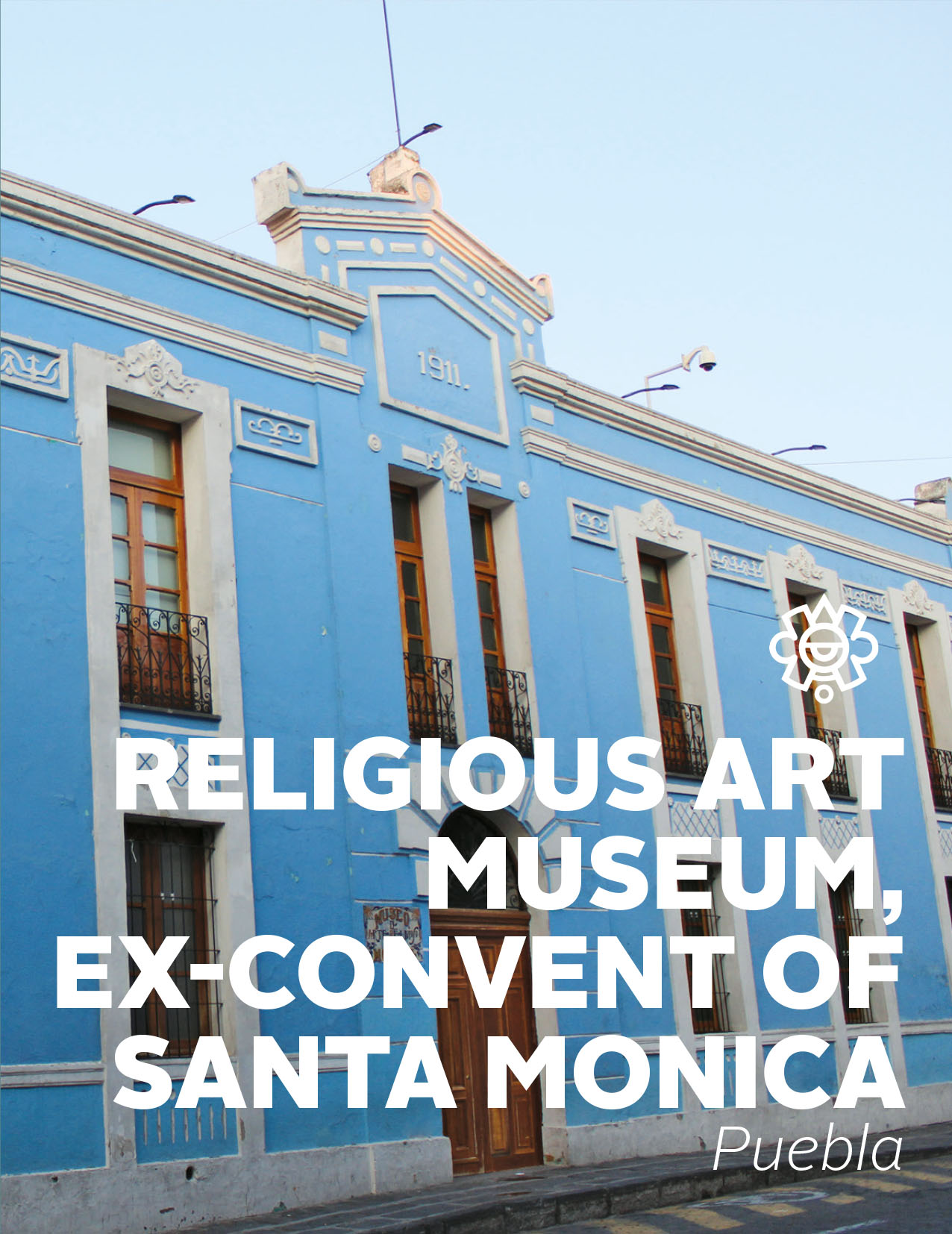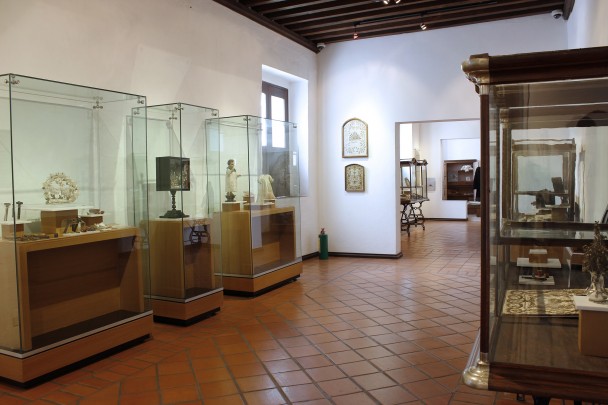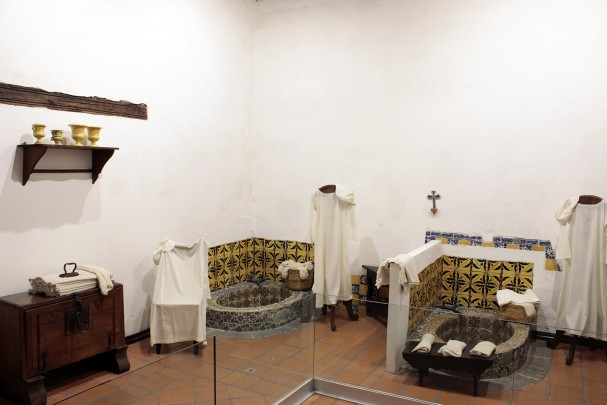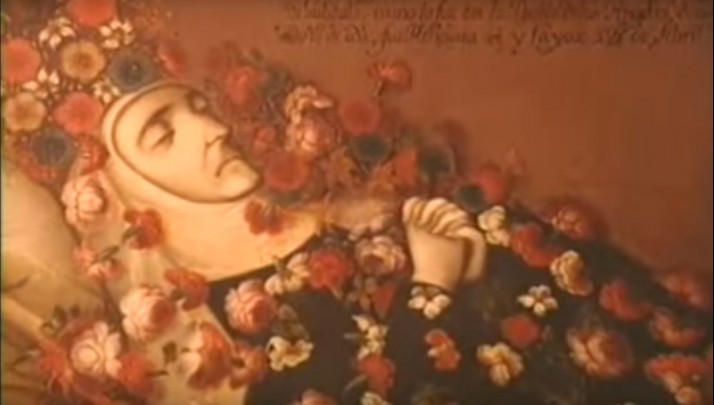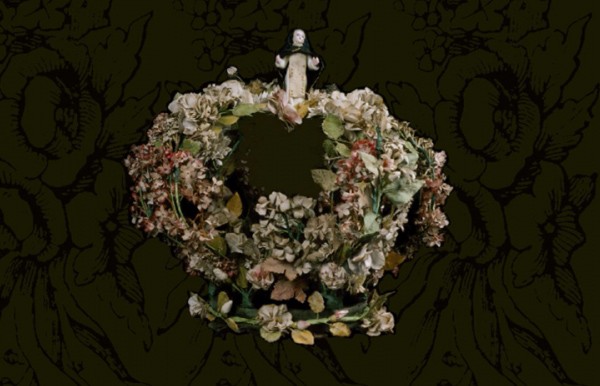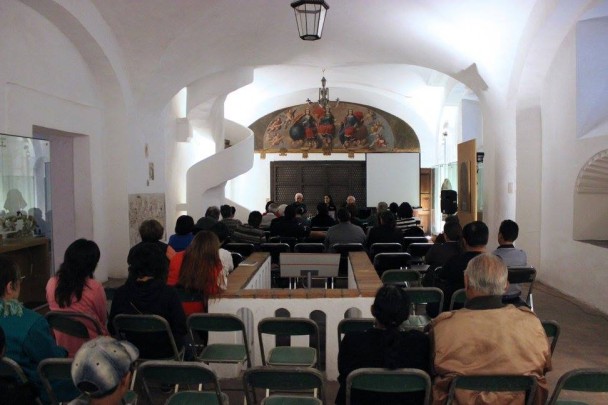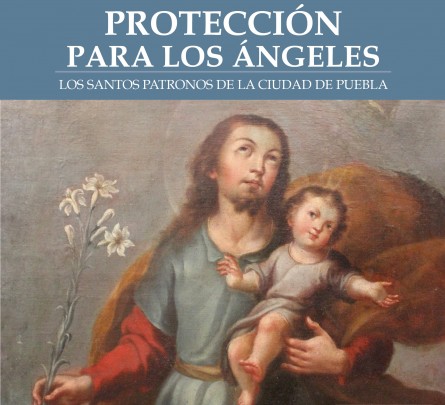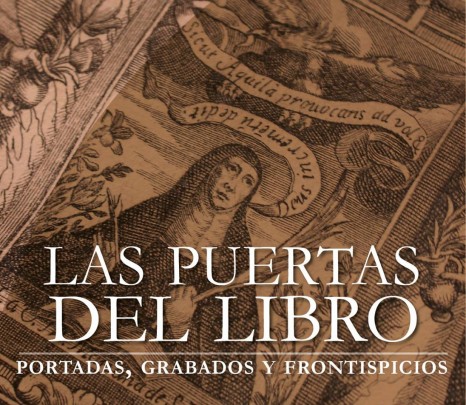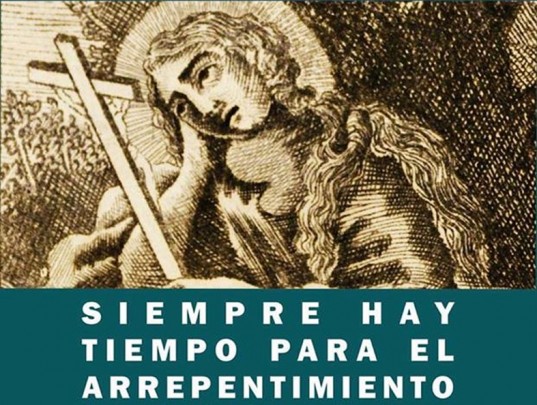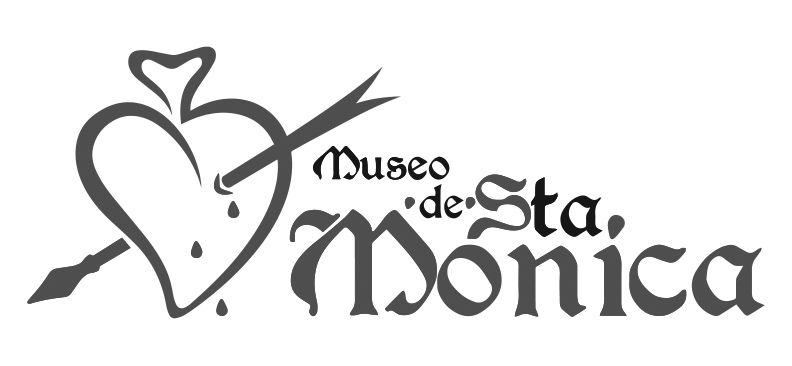Museo de Arte Religioso Ex Convento de Santa Mónica
The first museum dedicated to female monastic life during the seventeenth to twentieth centuries. The objects in the collection reflect a variety of customs and roles. There is a fine collection of paintings by renowned artists.
Historic place
About the museum
After the definitive exclaustration of the Augustinian Recollect Nuns of the Convent of Santa Mónica of Puebla in accordance with the Reform Laws incorporated into the Constitutions of 1857 and 1917, the building was converted into the first Mexican Museum of Sacred Art dedicated to female religious life. It became part of INAH in 1940. It has a collection of sacred art from the sixteenth to the nineteenth centuries, consisting principally of four collections from former convents of the city of Puebla: Santa Mónica (Augustinian Recollects), Santa Catalina (Dominicans), San Joaquín y Santa Ana (Capuchins) and La Soledad (Carmelites).
Puebla-style Baroque is evident in the seventeenth-century building of the former Convent of Santa Mónica, particularly in the Patio de Profesas (Courtyard of the Vows), covered in Talavera tiles with angled bricks in a pattern like woven palm straw (petatillo). Nevertheless the main facade of Calle 18 Poniente is in a Neoclassical style.
The museum reconstructs the nuns’ religious life in 23 permanent exhibition galleries and two courtyards, of the Vows and the Novices. The room settings are of particular interest: Pleasures (bathing), Kitchen, Refectory, Upper and Lower Choir and the Prioress’ Office. The thematic galleries are: The Life of St. Augustin, Reliquary, Allegories and Sponsors, Velvet (tapestries) and the Virgin Mary. These spaces display a collection which is unique of its type, consisting of religious paintings by notable artists of the viceregal period such as Juan Correa, Pascual Pérez, Juan de Villalobos, Luis Berrueco, Miguel Cabrera, Nicolás Rodríguez Juárez, Francisco Castillo, Miguel Jerónimo de Zendejas and Rafael Morante. There are also estofado and wax sculptures, a large collection of textiles worked by the nuns; embroidery and altarpieces, as well as the nuns’ library with liturgical books and objects.
In addition to the permanent exhibition, the Santa Mónica Museum currently has temporary exhibitions by guest curators, there are fine art educational workshops, conferences, book launches, concerts, guided tours and other academic and cultural activities.
The city of Puebla was founded on April 16, 1531 because of the need for a “Spanish” city between Mexico City and the port of Veracruz to counter the populous and fully indigenous city of Tlaxcala, which held privileges on account of its support of the Spanish during the conquest. During the colonial period, Puebla became one of New Spain's most important cities, with substantial investment, commerce and circulation of capital, to the extent that it received the title of “most noble and loyal Puebla de los Ángeles.” Eleven convents for women were founded in the city and Santa Mónica was one of these. In 1688 Bishop Manuel Fernández de Santa Cruz took the vows of 24 schoolgirls to become Augustinian Recollects, forming the first convent of this order in the Americas.
The 1857 the Reform Laws sought to wrest power from the Catholic hierarchy, which had been supporting conservative initiatives, although not necessarily the ordinary priests themselves. This led to successive exclaustrations which by the twentieth century forced the nuns to live discreetly in contravention of the law, hidden behind the walls of their convent, which remained active, although with interruptions owing to a series of temporary expulsions and successive occupations up until 1934. In that year the convent was discovered and closed after nearly 250 years of monastic life. This was one of the last monasteries to be closed in Mexico. The nuns were obliged to live in private houses, until they could acquire a new property.
The property was put into the safekeeping of the Ministry of Finance and Public Credit and the Office for National Property in Puebla, which was legally responsible for safeguarding artistic and historical property. The Convent of Santa Mónica became a depository for art objects confiscated mainly from the other four convents of the city, as well as its own. In 1935 it became the first museum of religious art in the Mexican Republic. In the same year a decree by president Lázaro Cárdenas passed responsibility for the building to the Ministry for Public Education, continuing until 1940, when the newly formed National Institute of Anthropology and History took over its management.
Puebla-style Baroque is evident in the seventeenth-century building of the former Convent of Santa Mónica, particularly in the Patio de Profesas (Courtyard of the Vows), covered in Talavera tiles with angled bricks in a pattern like woven palm straw (petatillo). Nevertheless the main facade of Calle 18 Poniente is in a Neoclassical style.
The museum reconstructs the nuns’ religious life in 23 permanent exhibition galleries and two courtyards, of the Vows and the Novices. The room settings are of particular interest: Pleasures (bathing), Kitchen, Refectory, Upper and Lower Choir and the Prioress’ Office. The thematic galleries are: The Life of St. Augustin, Reliquary, Allegories and Sponsors, Velvet (tapestries) and the Virgin Mary. These spaces display a collection which is unique of its type, consisting of religious paintings by notable artists of the viceregal period such as Juan Correa, Pascual Pérez, Juan de Villalobos, Luis Berrueco, Miguel Cabrera, Nicolás Rodríguez Juárez, Francisco Castillo, Miguel Jerónimo de Zendejas and Rafael Morante. There are also estofado and wax sculptures, a large collection of textiles worked by the nuns; embroidery and altarpieces, as well as the nuns’ library with liturgical books and objects.
In addition to the permanent exhibition, the Santa Mónica Museum currently has temporary exhibitions by guest curators, there are fine art educational workshops, conferences, book launches, concerts, guided tours and other academic and cultural activities.
The city of Puebla was founded on April 16, 1531 because of the need for a “Spanish” city between Mexico City and the port of Veracruz to counter the populous and fully indigenous city of Tlaxcala, which held privileges on account of its support of the Spanish during the conquest. During the colonial period, Puebla became one of New Spain's most important cities, with substantial investment, commerce and circulation of capital, to the extent that it received the title of “most noble and loyal Puebla de los Ángeles.” Eleven convents for women were founded in the city and Santa Mónica was one of these. In 1688 Bishop Manuel Fernández de Santa Cruz took the vows of 24 schoolgirls to become Augustinian Recollects, forming the first convent of this order in the Americas.
The 1857 the Reform Laws sought to wrest power from the Catholic hierarchy, which had been supporting conservative initiatives, although not necessarily the ordinary priests themselves. This led to successive exclaustrations which by the twentieth century forced the nuns to live discreetly in contravention of the law, hidden behind the walls of their convent, which remained active, although with interruptions owing to a series of temporary expulsions and successive occupations up until 1934. In that year the convent was discovered and closed after nearly 250 years of monastic life. This was one of the last monasteries to be closed in Mexico. The nuns were obliged to live in private houses, until they could acquire a new property.
The property was put into the safekeeping of the Ministry of Finance and Public Credit and the Office for National Property in Puebla, which was legally responsible for safeguarding artistic and historical property. The Convent of Santa Mónica became a depository for art objects confiscated mainly from the other four convents of the city, as well as its own. In 1935 it became the first museum of religious art in the Mexican Republic. In the same year a decree by president Lázaro Cárdenas passed responsibility for the building to the Ministry for Public Education, continuing until 1940, when the newly formed National Institute of Anthropology and History took over its management.
March 1935
Map
Practical information
Tuesday to Sunday from 10:00 to 17:00 hrs.
$75.00 pesos
Avenida 18 Poniente No. 103,
Centro Histórico, C.P. 72000,
Puebla, Puebla, México.
Centro Histórico, C.P. 72000,
Puebla, Puebla, México.
From the Zócalo (on foot): head northeast on Calle 16 de Septiembre toward Reforma Avenue, continue on Calle 5 de Mayo until Calle 18 Poniente, the Museum is on the left.
Public transport: bus routes 21, 16, Galgos del Sur, any one that takes you to the IMSS San José Hospital.
-
+52 (222) 232 0178
-
This email address is being protected from spambots. You need JavaScript enabled to view it.
-
FACEBOOK
-
TWITTER
Directory
Director
Sergio Moisés Andrade Covarrubias
This email address is being protected from spambots. You need JavaScript enabled to view it.
+52 (222) 232 0178
Comunicación Educativa
Victoria Huitzil Alvarado
This email address is being protected from spambots. You need JavaScript enabled to view it.
+52 (222) 232 0178

